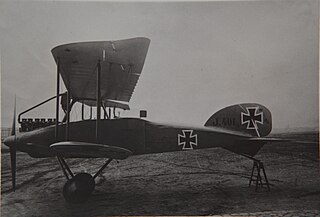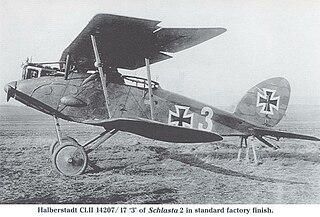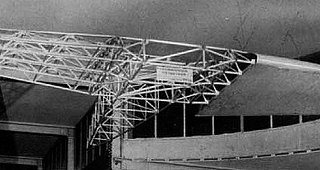 W
WThe AEG J.I was a German biplane ground attack aircraft of 1917, an armored and more powerful version of the AEG C.IV reconnaissance aircraft.
 W
WThe AEG PE was a triplane ground-attack aircraft of World War I, one of the first aircraft designed from the outset for that role. The Idflieg rejected it on the grounds that its poor maneuverability made it too vulnerable to enemy fighters.
 W
WThe AGO S.I was a German prototype ground-attack aircraft built in October 1918 but possibly never flown before the end of World War I. It was a single-seat biplane armed with a downwards-firing 20 mm cannon.
 W
WThe Albatros J.I was a German armored ground attack airplane of World War I, produced in 1918.
 W
WThe Albatros J.II was a German single-engine, single-seat, biplane ground-attack aircraft of World War I.
 W
WThe Fokker K.I, also known as the M.9, was a German experimental aircraft.
 W
WThe Halberstadt CL.II was a German two-seat escort fighter/ground attack aircraft of World War I. It served in large numbers with the German Luftstreitkräfte in 1917-18.
 W
WThe Halberstadt CL.IV was a German ground attack aircraft of World War I.
 W
WThe Hannover CL.III was a German military aircraft of World War I. It was a two-seat multi-role aircraft, primarily used as a ground attack machine. Like the other Hannover "light-C-class", or "CL" designated aircraft designed by Hermann Dorner, it included an unusual biplane tail, allowing for a greater firing arc for the tail gunner. Until the introduction of the aircraft, such tails had only been used on larger aircraft.
 W
WThe Hannover CL.V was a biplane ground-attack aircraft built in Germany during World War I, which saw some service and additional production in Norway following the war.
 W
WThe Junkers CL.I was a ground-attack aircraft developed in Germany during World War I. Its construction was undertaken by Junkers under the designation J 8 as proof of Hugo Junkers' belief in the monoplane, after his firm had been required by the Idflieg to submit a biplane as its entry in a competition to select a ground-attack aircraft. The J 8 design took the J 7 fighter as its starting point, but had a longer fuselage to accommodate a tail gunner, and larger wings. The prototype flew in late 1917 and was followed over the next few months by three more development aircraft. The Idflieg was sufficiently impressed to want to order the type, but had misgivings about Junkers' ability to manufacture the aircraft in quantity and considered asking Linke-Hoffmann to produce the type under licence. Finally, however, Junkers was allowed to undertake the manufacture as part of a joint venture with Fokker, producing a slightly modified version of the J 8 design as the J 10. Like the other Junkers designs of the period, the aircraft featured a metal framework that was skinned with corrugated duralumin sheets. 47 examples were delivered before the Armistice, including three built as floatplanes under the designation CLS.I. After the war, one or two CL.Is were converted for commercial service by enclosing the rear cockpit under a canopy.
 W
WThe Junkers J 3 was an all-metal single-seat experimental fighter aircraft.
 W
WThe Junkers J.I was a German "J-class" armored sesquiplane of World War I, developed for low-level ground attack, observation and army cooperation. It is especially noteworthy as being the first all-metal aircraft to enter mass production; the aircraft's metal construction and heavy armour was an effective shield against small arms fire over the battlefield.